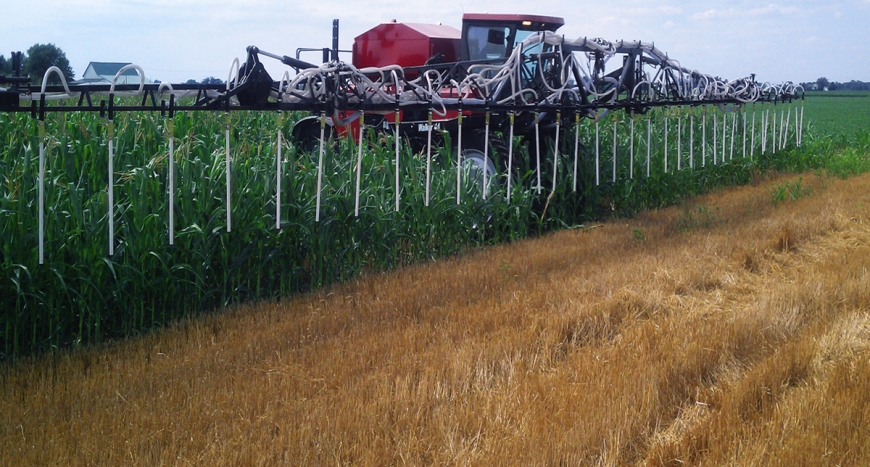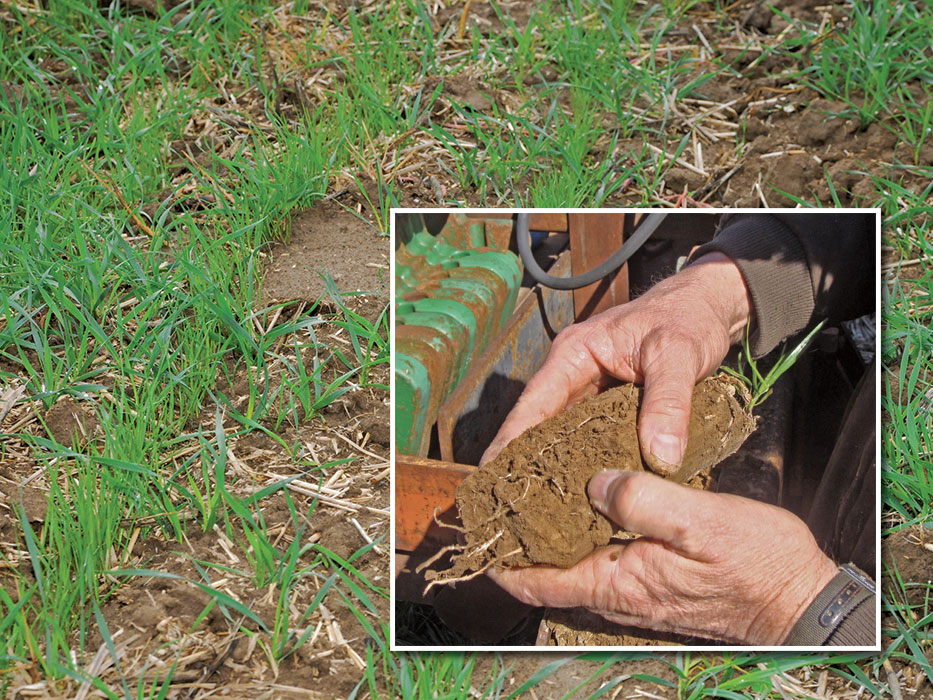New Equipment to Deliver Seed to the Soil; New Research about Ryegrass as a Cover Crop – Part 2
After meeting, the two university extension agents, Mark Mellbye from Oregon and Mike Plumer from Illinois, established a quick and easy rapport, which was key to the cover crop campaign. On Mark’s first visit, after meeting Mike, they traveled to Junior Upton’s land in hilly, southeastern Illinois. Junior had agreed to be a test farm for annual ryegrass as a cover crop. Both he and Plumer were experienced by then with no-till, and both had been experimenting with cover crops. Plumer had brought his own seed drill to plant annual ryegrass seed on Junior’s place in the fall, after the corn was harvested. Mark had arranged for Oregon seed to be given to Junior for the test plot.

“It took a lot of time to modify equipment for the no-till environment,” Mark said. “It was more than a decade before you would find planter/drills that could clear away excess residue from the row, open and close a slit in the earth for the seed and be able to maintain a uniform seed planting depth. It was a specialty piece of equipment, and while some innovators would modify their existing planters, buying a new one was part of farmers’ resistance to cover cropping.
Two other discoveries helped that issue. First, innovators showed success using planes to broadcast annual ryegrass seed. While it took more seed per acre with broadcasting than a drill, it was quick, it didn’t require a new equipment purchase, and it could be done without tying up a farmer’s time.
A second type of broadcasting seed was also developed, using high-clearance equipment with modified spreaders.

In both cases, a major benefit to aerial or broadcast seeding was that the window for planting a cover crop was opened considerably. Though experimentation, the early adopters found that seed could be sown while the corn or beans were still in the field. Yes, some of it would lodge in foliage and perhaps the coverage was less uniform than with a drill. And, yes, there was less seed-to-soil contact ideal for germination, especially if there wasn’t sufficient rain to establish the cover crop. But compared to the cost of acquiring specialized drill equipment, and the impracticality of planting cover crops after harvest, the cost of buying an extra 10 pounds of seed per acre was insignificant. (see the free management guide)
The second hurdle was to learn enough about the behavior of annual ryegrass as a cover crop to have more confidence talking to potential customers about what to expect and how to manage the crop. This phase was the one where Mark logged the most time. “I made more than 30 trips to the Midwest over a five-year period, during which I worked with Mike and others on gathering data on annual ryegrass research plots in nine different Midwest locations,” Mark said.
The research was in two basic areas: testing different annual ryegrass varieties – some brand new – and then how each variety responded to recommended doses of herbicide. Each of the nine plots was a minimum of five acres, and data was collected on repeated trials over a period of five years. What came out of the research, in addition to which varieties were the hardiest and which the easiest to manage, was the new understanding we have about the potential for herbicide “carryover” from a prior year’s weed control program, which can negatively impact the start of a new cover crop the following year. You can read more about that here. Mark said that Oregon seed growers provided all of the seed for the trials as well.
“During the herbicide trials, we got additional support from industry partners like BASF, Bayer and Monsanto,” Mark added. “And, of course, the contribution of land, time and equipment on the part of the partner farmers in the Midwest was of tremendous value.”
“The final hurdle to overcome was resistance to change,” Mark continued. “And that’s an ongoing effort. What truly helped was getting some research done, getting people like Mike Plumer and Dan Towery involved as educators. Then, beginning in 2010, the Oregon Commission began funding an outreach effort focused on education, not sales. We started with a series of annual ryegrass publications (click here), and because of our widespread research trials, ag media reporters and editors looked at the data and began to profile innovators like Junior Upton, Jamie Scott, Dan DeSutter and others.” These were the early adopters who became champions of no-till, cover crops and annual ryegrass.
“Each year,” Mark added, “me and others from Oregon would also go to the major industry trade shows. Each year, the interest in cover crops grew and the word of mouth provided a big shift in how the public viewed this new crop management practice.”
Likewise, each year, dozens of field day demonstrations would be held, where cover crops were being used and where the grower, and either Plumer or Towery, would give background and details for those with questions.
During the same time period, the Commission also produced a series of instructive videos on various aspects of growing and managing annual ryegrass as a cover crop. You can find those here.
In the next couple of blogs, we’ll introduce Dan Towery, a consultant with an amazing career devoted to conservation agriculture. His contributions, like Plumer’s and Mellbye’s, have helped thousands of growers ease into cover crops, with good advice and hands-on experience.

